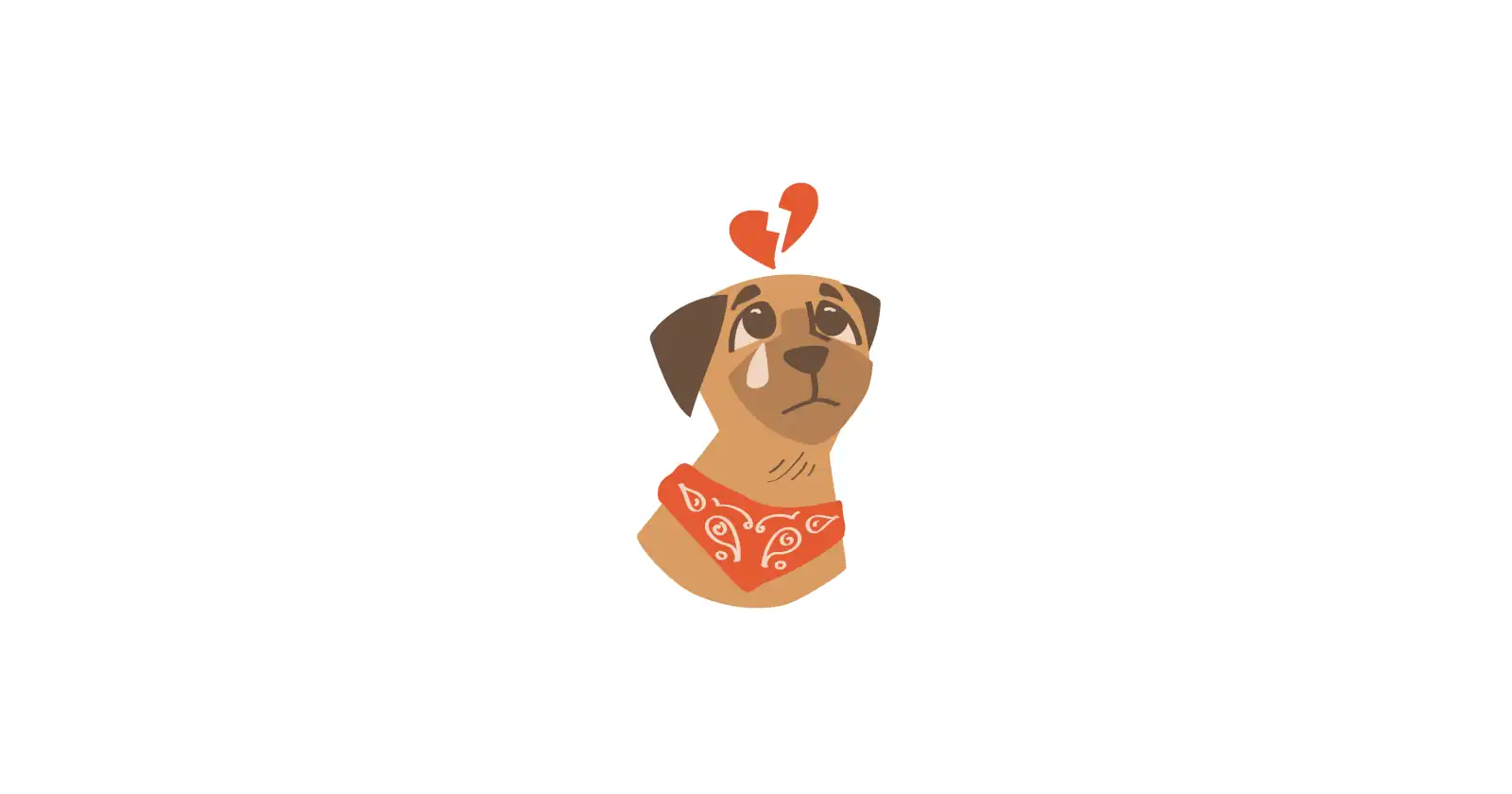Separation Anxiety in Dogs

Table of Contents
Many pet parent complaint about their dog’s destructive behavior when left alone. Their dogs may chew on furniture, bark, howl, urinate, or try to escape when left alone. The destructive behavior might be a symptom of anxiety or distress in pets. While showcasing emotions is normal for dogs, separation anxiety is something that demands serious attention and cure. Don’t know if your dog is going through separation anxiety as well? Here’s a guide on what it is and ways you can reduce it.
What is Separation Anxiety?
Dogs are highly social animals who live in packs in their natural habitat. Following someone they love and trying to get their attention all the time is their natural behaviour. But, we humans, live a very different lifestyle than the dogs, we need to go out to earn bread or for other routine things. So when our dog is left alone at home with no one to follow, and they are hyper-attached to their guardian, separation anxiety might get triggered. It can be seen in both puppies as well as adult dogs. When separation anxiety is triggered in dogs, their stress can rise to a level of self-harm or destruction of their surroundings.
Does this Happen to Every Dog?
The answer is no. Some dogs might be okay with staying alone for a few hours and anxiety won’t necessarily trigger them. The extent of this problem may also vary in every dog. Such behavioural problems are commonly found in dogs that have had traumatic experiences in the past or sudden changes in their home or environment. Dogs who have been abandoned in the past are more likely to show traits of separation anxiety.
However, in some cases, a healthy and happy-living dog may also develop anxiety issues. Dogs who do not get sufficient exercise are more prone to anxiety. A pet dog highly attached to their guardian might get affected by separation anxiety as well.
Symptoms of Separation Anxiety
The symptoms of separation anxiety in pets can vary depending on the severity of the condition and the individual animal. However, here are some common signs to look out for:
-
Destructive behavior: Pets with separation anxiety may chew on furniture, walls, or other objects in the house when left alone.
-
Excessive barking or howling: Dogs with separation anxiety may bark or howl continuously, especially when left alone.
-
Urinating or defecating in the house: Pets with separation anxiety may urinate or defecate inside the house, even if they are house-trained.
-
Attempting to escape: Pets with separation anxiety may try to escape from their crate, room, or house, often causing injury to themselves in the process.
-
Pacing or restlessness: Some pets may become extremely restless or pace around the house when left alone.
-
Loss of appetite: Pets with severe separation anxiety may lose interest in food and refuse to eat.
Ways to Reduce Their Separation Anxiety
Once your dog is showing separation anxiety traits, the first thing to ensure is that they are habitual of living without you for a few hours. To build this habit, you can
-
Engage them with toys:
When leaving your pet, ensure to leave something they can engage with when you are away. The aim is to distract them with something they would like- a long-lasting chewing toy, soft toy, or a treat ball. When choosing a toy partner, ensure that your dog likes it. If your dog likes playing with it in your presence and ignores their toy when you are away- it means that your dog is too worried about you to play with them.
Another way to use toys is by playing with your pet right before leaving them. This will exhaust them when you go away and they would end up taking a rest because of their tiredness.
-
Develop their habit:
Most dogs get triggered by stress because they are not habitual of staying alone or without their guardian at all. Once they get conditioned to stay calm when alone, their separation anxiety issues might reduce. You can do this by observing which of your pre-departure activities trigger them-
- Picking up the keys
- Wearing shoes
- Or opening the door to go out
Once you know which activity begins to stress them, practise doing that activity but not leaving them. For instance, wear your shoes or pick up your keys, but don’t leave. Rather, get back to your seat normally. Repeat this activity several times a day and you’ll notice how your pet begins to act normally during your pre-departure routine.
Once your pet gets habitual of your pre-departure routine, begin leaving them alone. Start with a time period of 10-15 minutes and gradually increase it over time.
-
Seek professional help:
One significant way to resolve separation anxiety issues in dogs is to train your dog to enjoy their time alone and understand that you will be back in some time and they shall wait for you calmly. A dog behaviorist can train your dog to stay calm when alone without feeling stressed with various techniques.
What Not to Do?
Many pet parents end up punishing their pets for separation-triggered behaviour without knowing the consequences. If you are doing it too, it’s time to stop. Punishing or yelling at them might make things even worse to handle.
Moreover, not every dog shows separation anxiety issues. Hence, observe and monitor your pet’s response when leaving them alone for the first time and don’t leave them alone for long hours. Gradually increase their alone time once they seem comfortable.
Let the Experts Help You!
Separation anxiety can become an extremely serious issue when not paid attention to, especially when your pet might not even show any signs when they’re with you. This is the reason professional help is crucial- and we are right here to serve it to you.
At Kuddle, we help you with professional training to reduce your pet’s separation anxiety issues. Our trainers will make it easy for your beloved pet to stay alone and our dog walkers will keep you tension-free anytime your pet is alone at home and needs to go out for a walk or pee break. If you have any questions related to separation anxiety, let us know in the comments, and our experts will help you out!


